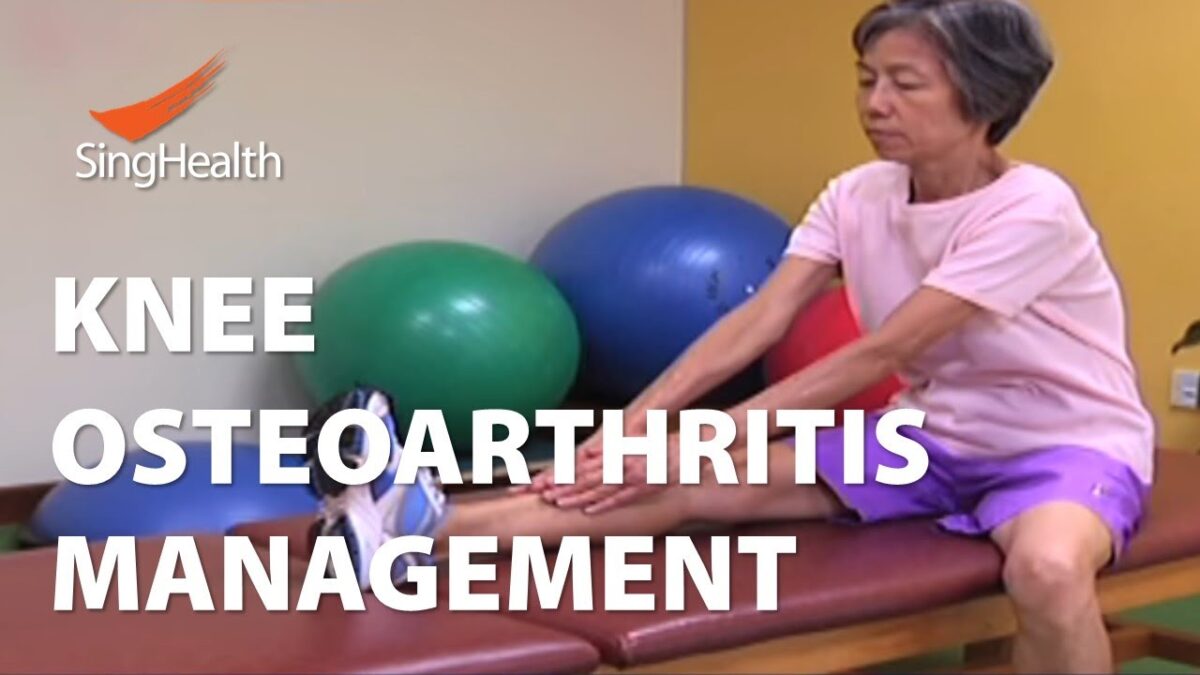Hi welcome to today’s, physiotherapy education series. Our topic today is on the osteoarthritis. Osteoarthritis is a very common cause of knee pain in a major to older age group. It is a where entire joint condition whereby the Kasich’s lining the joint surfaces has been worn out over many years of use, with less healthy, H, lining their joint surfaces all set to wrap directly over each other and the joint moves.
This can lead to knee pain, swelling stiffness as well as disability and clicking noises. This cannot even affect your day to day activities. Factors that predispose 120 osteoarthritis include being excessively overweight, having poor alignment in your lower limb bones having any previous knee injury, such as ligamentous damage or fractures, the inflexibility in your muscles, as well as wrong exercise techniques.
Any of these factors can lead to pop off or the entire region being overloaded, hence leading to the osteoarthritis. Here are some things that we can do to help. We certainly are tragic pain here’s, a hit back when you feel stiff, but not warm, however, keep in mind not to use a hip pack.
Bigger join feels warm and swollen, instead use a cold pack to reduce the swelling warmth and pain, lose some weight to offload the mean. If you are overweight, this reduces a stress through the knee, keep your knees, strong and flexible by exercising, regularly and correctly.
In the event of the up, co doctor and rest restart your exercises once the pain subsides here are some exercises that can help me Muslim strength and flexibility. You may want to try these exercises at home.
Stretching exercises hold 20 to 30 seconds repeat 5 times, for each of these stretches, hamstrings get into a long sitting positions and lean forward until you feel a stretch at the back of your time, avoid bending your knees for this exercise.
Alternatively, you may perform this stretch in standing by placing one foot on a stool and leaning forward. Come stand facing the wall with your palms on the wall, place one leg behind the other, keeping the toes pointing forward, bend the front knees, keeping the hind leg straight.
With views on the floor, you should feel a stretch in a cow hold for 20 to 30 seconds. Do not raise your heels off the floor or point your toes sideways. Quadriceps stand Tori one hand supported on a chair, bend your leg back and hold your ankle, with the other hand, put your heels towards your buttocks feeling a good stretch in front of your tight hold for 20 to 30 seconds before lowering it down.
Remember to keep your knees together when doing the stretch. Strengthening exercise hold for 10 seconds repeat 10 times and perform 2 to 3 sets straight leg. Raise lie on your back with one knee bent elevate, the other leg, 6 to 10 inches off the base, hold the position for 10 seconds and gently lower it down.
Hip abduction lie on your site with the bottom link ban, keep the upper Lake Street at in line with the body recently above horizontal and hold for 10 seconds before putting it down hip extensions lie on your stomach, raise one leg: keeping your knee straight hold for 10 seconds before putting it down wall squats stand with your back against the wall.
Take one two two step forward: slowly: lower yourself down the wall, keeping your back straight and knees behind your toes remember, to keep your knees to shoulder width apart and toes pointing forward hold the position for 10 seconds.
Do not bend your knees over your toes or keep your knees pointing inwards, sit up knee extension, sit over the edge of the bed or chair slowly straighten one knee hold the position for 10 seconds before lowering it down here.
Razors stand with hands supporter on a chair: slowly raise both heels up hopeful 10 seconds before lowering them down. In addition to these exercises, you may want to embark on low impact activities such as Tai, Chi, swimming or brisk walking.
Doing exercises in the pool is a great way to work. Your muscles, without putting undue stress on the knee joints as the water, will take your body weight off your pinky knees to ensure that the water level is at least past your waist height Tai Chi is also an excellent way to help improve osteoarthritic knees by increasing Flexibility, strength and support, as muscle control, if you think you have knee osteoarthritis and we like to learn more exercises to cope with this condition.
You can approach your doctor for physiotherapy referral.
